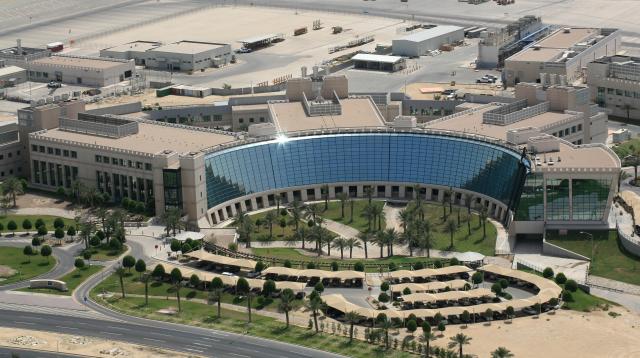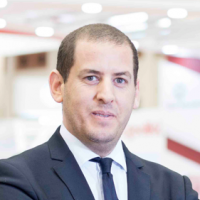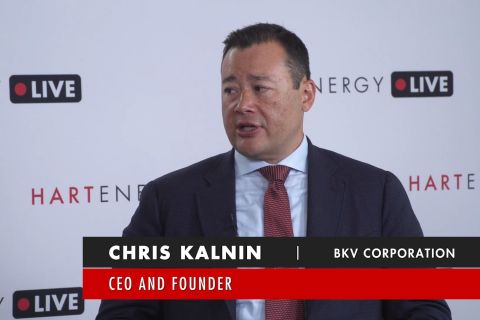
Inside Saudi Aramco's downstream R&D Center in Dhahran. (Source: Saudi Aramco)
Learn more about Hart Energy Conferences
Get our latest conference schedules, updates and insights straight to your inbox.
DHAHRAN and RAS TANURA, Saudi Arabia—After mastering the upstream business, Saudi Aramco is setting its sights on the downstream sector. It revealed an ambitious plan to be one of the major players in the world, which is part of the company’s objective to be not only a fully integrated energy company, but also one of the major technology developers. It also envisions becoming an enabler and creator of new technologies.
Saudi Aramco expects organic growth through the establishment of “mega-integrated” refining and petrochemical plants in collaboration with major international oil and gas partners as well as the acquisition of a 70% stake in local firm SABIC, which is one of the major petrochemical players in the world. It also expects growth from the acquisition of Shell’s 50% stake in SASREF refinery joint venture in Saudi Arabia for US$631 million.
Saudi Aramco also unveiled a very ambitious research and development (R&D) programs that seek to support the company drive to consolidate its downstream ambitions, as a key factor to success in the downstream sector is the technological advancement and superiority. This is part of the company ambitions to move from its traditional role as buyers and consumers of technology to its new global technology and R&D strategy.
Amer Ahmad Amer, chief technologist at Saudi Aramco’s R&D Center Fuel Technology Division, said that in 2020, Saudi Aramco aims to be a technology leader, emphasizing on high-impact technologies that typically involve long-range strategies.
“By 2020, our objective is to be technology enabler to be able to maximize the company’s income as well as driving a knowledge-based economy in the country,” Amer told HartEnergy.com during the visit that Saudi Aramco organized for Hart Energy to its headquarters and facilities in Dhahran and Ras Tanura.
“In terms of patents, Saudi Aramco was granted more than 317 patents in 2018, which places [it as] the second major player after Exxon Mobil, and we are working to become the number one in the next few years,” Amer continued.
Amer said that the company has dedicated R&D centers that covers the various segments of the company’s business. This includes EXPEC ARC, R&D Center, and Saudi Aramco Energy Venture, in addition to 8 R&D centers in various locations around the world. While Expec Arc covers the up R&D activities related to the upstream sector and all activities that take place below surface, the R&D Center is in charge of the downstream sector and all activities that take place above surface.
The R&D Center covers six main domains including oil and gas treatment, refining and upgrading, chemicals, oil and gas network integrity, fuel technology and carbon management.
“The oil and gas treatment works on developing to enhance gases and crude oil-water desperation, and produced water treatment,” Amer said. “So far, we are working on various programs such as natural gas storage, has separation, crude oil water separation, produced water treatment and reuse.”
Carbon management is one of the key domains that Saudi Aramco invest heavily in new technologies to tackle carbon related issues. The objective is to develop low-carbon technologies to ensure sustainability of hydrocarbon use and optimization of Saudi Arabia energy mix.
“Our programs focus on energy efficient power generation, carbon capture and utilization, and renewables,” Amer said.
Meanwhile, the fuel technology domain currently works on programs such as passenger transport, commercial transport and low GHG fuels, with aim of promoting the development and adoption of cost effective and sustainable oil-based transport solutions.
While the R&D Center mainly focus on downstream programs, some of the programs also target challenges that are faced in upstream segment of the business, such as the oil and gas treatment programs, which mainly cover upstream business, with natural gas storage program cover both, in addition to chemical additives, sensing and monitoring, and nonmetallic material programs.
In the refining and upgrading, the company aims to develop conventional and unconventional technologies for upgrading crude and its fractions. Currently, the R&D Center’s teams work on diesel and gasoline maximization, unconventional upgrading, and molecular modeling.
Amer said that the chemical’s domain of the R&D Center seeks to develop technologies to increase the use of petroleum-based feedstock for chemicals and improve refinery-petrochemicals integration.
“Currently, we are working on crude to chemicals technology, intermediate streams conversion, alpha olefins technology and chemical additives,” he said.
The oil and gas network integrity works on R&D programs that aim to develop technologies to enhance integrity of pipelines and facilities. “Current programs that cover oil and gas network integrity works include corrosion prediction and modeling, sensing and monitoring and nonmetallic material program,” Amer added.
With the strong research capacity at the company’s disposal, Amer highlighted Saudi Aramco’s investments in oil to chemicals, enabling the company to capture the growth opportunity in this high-value sector. He noted that the company’s efforts are being made in the context that chemicals are expected to be the largest driver of global oil demand; and fundamental to capturing value in petrochemicals is integration. Leveraging feedstock advantage and reconfiguring the conventional refining approach, crude oil to chemicals technology can achieve a higher conversion rate—45% to 50% versus the industry average of 30%—to generate greater value across the hydrocarbon value chain.
Furthermore, Saudi Aramco’s pioneering crude oil to chemicals technology targets a 70% crude oil to chemicals conversion rate, which could be a game changer in the industry.
To achieve this objective, Saudi Aramco signed an agreement with CB&I and Chevron Lummus Global to accelerate, scale up, and commercialize Saudi Aramco’s Thermal Crude to Chemicals technology, shifting the average conversion rate from 45% to more than 70% by 2020, while working to reduce overall energy and capital intensity.
In addition to the ambitious R&D program, Saudi Aramco is modernizing its facilities and upgrading the quality of its products, such as the clean fuel project in Ras Tanura Refinery, as the company has been revamping its refineries to produce cleaner fuels, a trend at Middle Eastern refineries to target export markets with stricter environmental requirements. Abdullah Albagar, chief engineering officer at Ras Tanura Refinery said that the clean fuel project in Ras Tanura aims to produce products with less sulfur, to meet the EURO 5 specifications.
“The objective is to reduced the sulfur content in diesel to 10 bpm from current 500 bpm. We managed to move from 10,000 bpm to 500 bpm,” Albagar said during the visit to Ras Tanura refinery. “The clean fuel project includes isomerization, naphtha hydro-treatment, continuous catalytic reforming (CCR), interconnections, flare system and buildings. The project is set to be completed within two to three years.”
Albagar also said that the general turnaround of the Ras Tanura Refinery is seven years, with some units maintained every 5 years.
Recommended Reading
What's Affecting Oil Prices This Week? (April 15, 2024)
2024-04-15 - While concerns about the stability of oil supply are increasing, Stratas Advisors does not expect oil supply to be disrupted – unless there is further escalation in the Middle East.
US NatGas Futures Hit Over 2-week Low on Lower Demand View
2024-04-15 - U.S. natural gas futures fell about 2% to a more than two-week low on April 15, weighed down by lower demand forecasts for this week than previously expected.
BKV CEO: Texas Grid Needs More Combined Cycle NatGas Plants
2024-04-12 - BKV CEO Chris Kalnin dives into the "core issue" of Texas' renewable grid and how the company is increasing production as the the largest producer in the Barnett Shale, in this Hart Energy Exclusive interview.
Asia Spot LNG at 3-month Peak on Steady Demand, Supply Disruption
2024-04-12 - Heating demand in Europe and production disruption at the Freeport LNG terminal in the U.S. pushed up prices, said Samuel Good, head of LNG pricing at commodity pricing agency Argus.
US NatGas Flows to Freeport LNG Export Plant Drop Near Zero
2024-04-11 - The startup and shutdown of Freeport has in the past had a major impact on U.S. and European gas prices.



